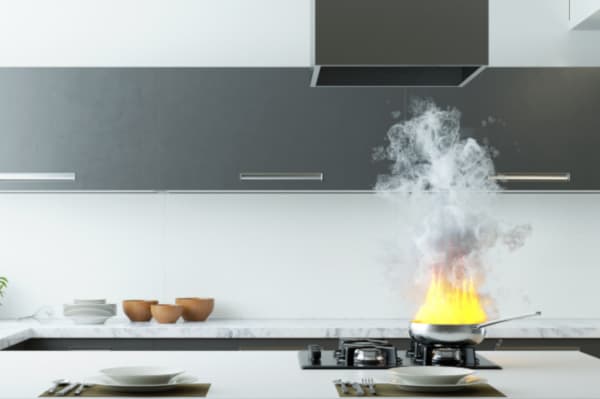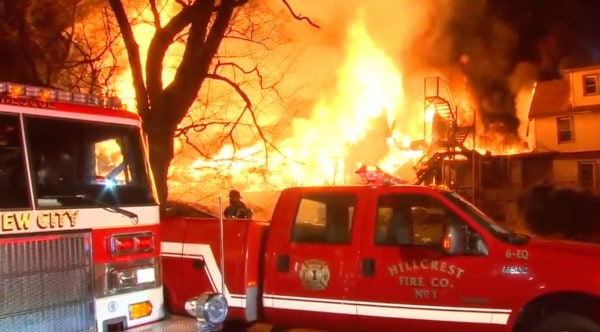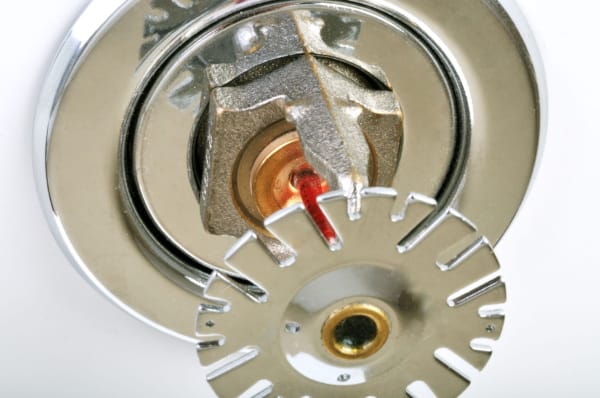Working fire sprinklers saved lives and property at an Illinois senior living complex
QRFS would like to celebrate something that took place at a senior living complex in Park Forest, Illinois, this summer. What made the news great wasn’t so much what happened—rather, what didn’t. A single fire sprinkler stopped a spreading fire in its tracks, preventing death and injury, property damage, and the displacement of residents.
This is one of those everyday good news stories that don’t get much attention but highlight the successful role of fire protection systems and codes in modern life. A working fire sprinkler system simply did its job.
So did the community’s managers, who kept their residents safe by maintaining the building’s fire protection systems. And QRFS would like to thank them for it!
A lone sprinkler saves the day
The Victory Centre of Park Forest is a senior community in Park Forest, IL that features “79 supportive living apartments for adults 65 and over and 95 independent living apartments for adults 62 and over.”
In early June, a resident was cooking but left the stovetop unattended, according to reports by the National Fire Sprinkler Association (NFSA) and The Northern Illinois Fire Sprinkler Advisory Board. Unfortunately, she fell asleep, and a fire started. The blaze leaped from the stove and traveled up the kitchen cabinets before one fire sprinkler activated to control—and ultimately extinguish—it.
After the fire alarm went off, building maintenance personnel quickly accessed the resident’s apartment and found her in bed. An NFSA newsletter reports what happened next:
They assisted her out of the apartment while walking past the activated sprinkler.
Fire crews arrived to find only light smoke in the apartment and the fire extinguished. The occupant was checked out by EMS and refused any other care. No further fire damage beyond the stove and cabinet. The system was serviced that afternoon and back in service the same day.
Crucially, “none of the other 94 apartments received any damage or any other reported injuries.”

The danger of cooking fires—and the fire protection rules for senior housing
Places like Victory Centre aren’t just senior “residential board and care facilities,” as they are defined by some model fire code—many of them are also communities made up of homes with elderly residents. And home cooking presents one of the biggest fire protection challenges in the United States.
The National Fire Protection Association (NFPA) reports “an estimated average of 172,900 home structure fires per year started by cooking activities” between 2014-2018. These fires caused an average of 550 civilian deaths, 4,820 reported civilian fire injuries, and more than $1 billion in direct property damage per year.”
In addition:
- “Unattended cooking was the leading cause of cooking fires and casualties.”
- “Ranges or cooktops were involved in the 61% of reported home cooking fires, 87% of cooking fire deaths and 78% of cooking fire injuries.”
Compounding these risks in senior communities are residents who may have health issues and mobility challenges, increasing the possible impacts of fires. This is why NFPA and the International Code Council (ICC) outline unique fire protection requirements for these buildings, defining them as Residential Board and Care Occupancies (NFPA) and Group I, Institutional Occupancies (ICC).
Among the model codes’ requirements for these occupancies are fire extinguishers, fire alarms, and fire sprinkler systems, the latter of which must be maintained according to NFPA 25: Standard for the Inspection, Testing, and Maintenance of Water-Based Fire Protection Systems. Thankfully, the management at Victory Centre of Park Forest had sprinklers and kept them working—and this maintenance certainly paid off.

What could go wrong
Unfortunately, not all senior housing fires end well. For example, in 2018, “two residents and two employees were hospitalized” after a fire that started in a rooftop electrical box in Lakeland, FL senior living facility. Earlier this May, one resident of a senior housing complex died after a cooking fire in Seattle. And on March 23, a fire at an assisted living facility in the Spring Valley suburb of New York City killed one resident and one firefighter and displaced 112 residents.
After a three-month investigation of the fire, six people were charged with criminal offenses ranging from second-degree reckless endangerment to second-degree manslaughter. Two building inspectors were “charged with first-degree offering false instrument and falsifying business records for allegedly falsely filing reports to New York State regarding fire inspections.”
Here is a local news report on the immediate aftermath of the Spring Valley fire:
The low-profile, everyday events that save lives and property
Fire protection systems save lives and property daily, and only fire sprinklers provide automatic, active protection. A properly maintained fire sprinkler system doesn’t just alert people to a fire—it does something about it.
These active systems are especially important in senior living communities where residents may have more trouble evacuating during an emergency. Building and facility managers have a special responsibility to install fire protection equipment and keep it working to protect their residents.
“The sprinkler stopped the fire and saved a life,” said Captain Phillip Myers of the Park Forest Fire Department after the event at Victory Centre. “If this building was not protected, the outcome could have been much different.”
The management of Victory Centre in Park Forest fulfilled their responsibility to their residents and their families—and QRFS thanks them for it.
QRFS is on a mission to simplify fire protection through access to affordable products and information, that make it easier for everyone to stay safe and compliant. Contact us at (888) 361-6662 or support@qrfs.com.
This blog was originally posted at blog.qrfs.com. If this article helped you, check us out at Facebook.com/QuickResponseFireSupply or on Twitter @QuickResponseFS.


